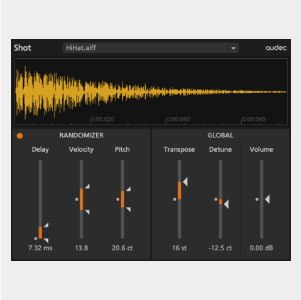
Smoke draws both crosshairs and 75 percent targets. Autodesk Smoke has a unique vectorscope graph option that averages analyzed color as a scatter graph that consists of differently sized dots representing the amount of color at that position, which makes it really easy to read and calls attention to the outer boundary of signal that light traces might not make apparent.
Vectorscope scopebox software#
Figure 4.27 illustrates the differences in three commonly used vectorscopes.įigure 4.27 Three excellent examples of different software vectorscopes compared (left to right): DaVinci Resolve, Autodesk Smoke, and Divergent Media ScopeBox (showing the optional Hue Vectors graticule that I designed).ĭaVinci Resolve has a traditional vectorscope, the graph of which emulates a trace-drawn graph, with 75 percent color bar targets and an In-phase reference line. These traces aren’t necessarily adding any actual data to the graph, but they make it easier to see the different points, and so they can be easier to read. Some software scopes represent the analyzed data as a discrete point of data on the graph, while others emulate the CRT method of drawing traces corresponding to each line of video that connect these points together. I happen to think it’s still a useful reference, as I discuss in Chapter 8.ĭifferent software scopes display different graticule elements and also draw the vectorscope graphs differently.

The “I-bar” (as I’ve come to call it) is optional, and opinions vary as to whether it truly belongs on an HD scope. When it comes to graticules, most vectorscopes have some manner of centered crosshairs at the center, which are critical for providing a reference of neutral black, gray, and white in the signal. Tic marks along the I- and Q-bars correspond to the voltage waveform that would be traced by the discrete I and Q components, while tic marks running along the outside border note 10-degree increments.These stand for In-phase and Quadrature (an amplitude modulated phase 90 degrees relative to In-phase), which correspond to the purple and cyan/blue patches at the bottom of the color bars signal. I and Q diagonal crosshairs (and their –I and –Q counterparts).

Crosshairs that indicate the desaturated center of the vectorscope graph.Figure 4.26 Portions of the SMPTE test pattern that correspond to vectorscope graticule elements are called out.


 0 kommentar(er)
0 kommentar(er)
